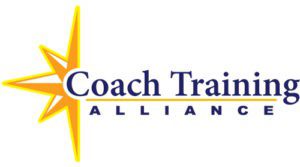Author: Rhonda Hess
I’ve been a life long student of boundaries. That is to say, boundaries have been a core issue for me in the past and now it’s much less of an issue. When I sense myself leaning in too far, trying to do too much, to people please or over-deliver, I rein myself in.
Still, I occasionally fall into old patterns, even in coaching relationships.
I’m a 2 on the Enneagram. That’s “The Helper.” More than anything, I want to be of service to others, to help them better their circumstances. It’s a good fit for being a coach. And a strength overused becomes a weakness.
In the past, it’s often meant that I gave too much in all of my roles and relationships. And, I allowed some people to step on me… repeatedly.
Powerful Questions to Uncover Boundary Challenges
What about you? Do you like to fill in the holes and make sure everyone is taken care of? Are you a natural helper or people pleaser? A lot of coaches are.
Here are more specific questions to ask yourself:
With coaching prospects…
Do you reduce your fees habitually to suit prospects?
Do you bend over backward to prove your worth in Discovery Sessions?
With coaching clients…
Do you habitually go over time in sessions?
Are you charging enough to cover your investment of time outside of sessions?
Repetitive Over-Delivery Hurts You and Your Coaching Clients
Early on in my business I attended an International Coach Federation conference and met Cheryl Richardson.
She was asking a group of coaches… Do you want more for your clients than they want for themselves?
Bam! That was an aha moment for me. The answer was ‘YES’… always.
I learned from Cheryl that ultimately your client must choose transformation for it to happen. They must want it with all of their heart, mind and be willing to take action outside their comfort zone.
If you want something for them more than they do for themselves, it creates an imbalance in the co-creative relationship and the reality is, you’re going to be pushing them and they won’t appreciate it.
Later on, a friend of mine created a training based on years of research called Right Use of Power and I attended one of her first workshops.
Another huge aha. Let me explain…
When you are in a practitioner or authoritative or helper role, that role carries a certain amount of power. Hopefully, as coaches, we believe we are our client’s equals, but even so, they may hold some deference for us.
It’s up to coaches to do our best to equalize the power in the coach-client relationship. And this requires a lot of self-reflection and self-awareness.
Right Size Yourself
You might be kind of surprised that the answer to balance the power is not to give clients more, more of your time or make it easier for them by taking some of their responsibilities your own shoulders like giving them discounts.
Those kinds of things actually increase the power differential. And they do something to you too. You’re inflating your role and deflating your own power.
The answer is to invite the client to stand in their own power by making their role clear to them. And to stand firmly in your role without inflating or deflating your power.
Treat your prospects and clients as responsible people who are creative, resourceful and whole. That means:
- Charge fees that pay you well. Don’t discount those fees to enroll a client.
- Set and maintain time boundaries for sessions. If you’re about to go over time, acknowledge that you’re purposefully going over time and set a reasonable time boundary that you stick with.
- Hold your clients accountable for paying their fees on time, showing up on time, being ready to coach, and doing their own work in between sessions. Don’t do their work for them unless that’s explicitly part of your program.
To know if you’re being right-sized, notice if you’ve over-inflated your role by taking responsibility from them or under-inflated your role by not owning your own power.
It is a dance that requires self awareness.
Set Boundaries Early On
If you clearly show prospects and clients your boundaries early on in relationships, you have a better chance at a mutually satisfying relationship.
If they are empowered, they will take leaps.
“We teach people how to treat us.”
Phil McGraw
With prospects, that’s as simple as holding the time boundary on your Discovery Sessions and by not stepping into the coaching role in that session.
- Be transparent on your website and in emails about what they can expect from your Discovery Session. It’s a get-to-know-you conversation where you’ll each assess fit for working together.
- During the session, ask them open-ended questions. Let them talk.
- Understand what they want right now and what’s keeping them from it. Then apply that to your signature program.
- Share your fees and stand behind them.
With new clients, give an orientation at the beginning of your first session.
- Set ground rules about cancelations, showing up on time and time boundaries.
- Tell them your role and responsibilities and explain theirs. They send a Session prep. They set the agenda. They show up truthfully. They take action between sessions.
If they fail to bring an agenda, illustrate what an agenda is and reinforce it’s their role to set a specific bite-sized takeaway for each session.
These are small things. And they set the tone powerfully.
And still, there will be tests.
Red Flags That You’ve Inflated or Deflated Your Coaching Role
How can you tell if your boundaries need fortifying?
1. You feel desperate to enroll this prospect.
- That desperation will deflate your power while tempting you to inflate your role and discount your fees.
2. You feel overwhelmed by a client’s energy.
- The client may not be a good fit. Maybe you’ve said ‘yes’ when your intuition clearly said ‘no’.
- Or, you might need to make requests for them to slow down. Consider doing a grounding meditation at the beginning of the session.
3. You feel emotionally tapped out after working with a client.
- The client may not be a good fit.
- Or, you were over-delivering. You might have inflated to prove your worth. Get right sized. Stand in your power. Hold your boundaries.
- Try an energetic disconnecting exercise to release energy after the session.
4. You are beginning to feel resentful toward the client.
- You likely inflated your role while deflating your power by taking some responsibility from the client such as charging too little or repeatedly giving too much for the fees you’re charging.
Only some people will be ideal coaching clients for you. And it takes time to realize what makes you a good fit for them and them a good fit for you.
Pay attention to ease and to your reactions to people to inform you. When you think of enrolling clients imagine your avatar — the ideal client for you.
The ultimate boundary is to learn how to say ‘no’ when you’re clear something is not right for you. Do it in an honoring way. Take it onto yourself. You might say something like:
“I feel strongly that I’m not the best resource for you.
And, fit is really critical in the work I do with my clients.
I’ve learned over time that I’ve got to listen to my integrity
and sometimes not take on a client, even if they want to work with me.”
Have some coach colleagues or other resources to refer those non-ideal people to. If they are not right for you doesn’t mean they won’t be right for someone else.
Author Rhonda Hess co-authored the Coach Training AcceleratorTM and designed the CTA Certified Coach Program. She has a super power for helping coaches choose and champion a profitable niche they’ll love. Learn more at Prosperous Coach.

